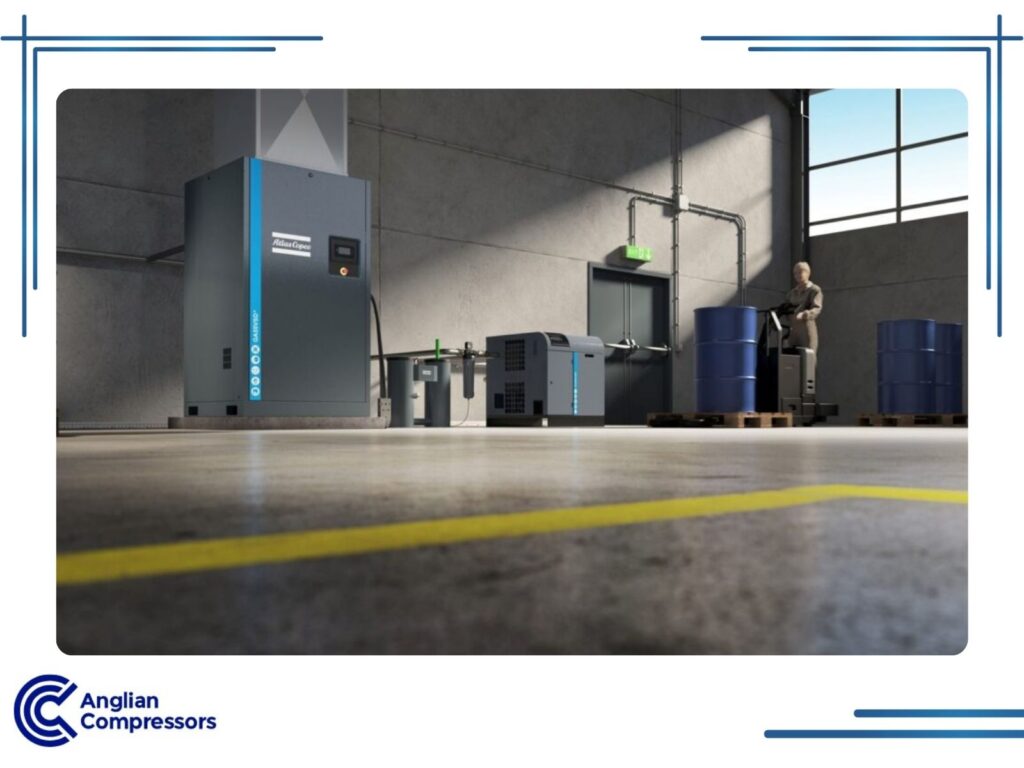What is a Compressed Air Audit and What are the Benefits?
A compressed air system won’t last forever, it has a usability lifetime. Perhaps it was fit for purpose when installed, but has compressed air usage changed since then? The maintenance necessary also becomes impactful the older the equipment becomes. Has your compressed air system still got what it takes, or is it wasting your money? Is it time for an air audit?
What is a compressed air audit and what are the benefits? Generating compressed air is costly; It also uses plenty of electricity. Some estimates suggest that around ten percent of manufacturing costs go into compressed air production. CO2 emissions and other environmental effects are also worth considering.
Anglian Compressors provides air audits to customers who already have a compressed air system installed. There are several levels of testing, from an initial review to a detailed analysis, to properly assess how a system is performing. Then, following an initial review, a full air audit may be undertaken.
For industrial settings, an audit of compressed air systems usually more than pays for itself with the significant savings it achieves.
Table of Contents
Understanding the Need for a Compressed Air Audit
Compressed air is regularly used for industrial applications. Whether that’s in helping to package food ready for distribution, powering laser cutting machinery, producing plastic objects, or empty bottles, it’s surprising how frequently compressed air is needed in an industrial facility.
While ambient air access nearby comes at no cost, producing compressed air is expensive, both from machinery costs and operational costs. Furthermore, the higher the pressure level required (measured in bar/PSI), the greater the cost of the energy expended to produce it. Indeed, when exceeding 15-bar pressure levels, an air booster is often included as a secondary step to increase the pressure level of compressed air.
Wasting energy through infrequent operations, air leaks within the system, flow rate inconsistencies, or air quality issues, adds up quickly. Each issue contributes to running longer, and often at a higher air pressure setting, to get pressurised air at the necessary level and flow rate.
With busy operations, inefficient systems are easy to overlook. However, excessive utility costs due to energy waste, extra CO2 emissions, air leaks, and additional wear & tear on equipment shouldn’t be ignored. Many system audits surface cost implications in the tens of thousands of pounds over the lifetime of the installed equipment.
The Process of a Compressed Air Audit
While a compressed air system audit certainly looks at the installation, equipment, nearby air quality, and other factors, it’s useful to have a fundamental appreciation of air systems. This is done by comparing the kilowatts (energy) consumed for every 100 Cubic feet per minute (cfm) of compressed air produced.
A compressed air audit begins with a site survey to assess the installed equipment, including the piping structure, and how each piece of equipment is supposed to be used vs. how it’s actually used.
The system dynamics are examined to determine what’s coming into the system, the compressed air output, and the energy consumed to obtain this result. This includes airflow, pressure, cfm, and energy use, and determines whether the system is operating efficiently.
Lastly, an audit report includes recommendations for further actions to take, the estimated cost to implement these suggestions, and a comparison to the cost savings expected from doing so.
The Different Levels of Compressed Air Audits
There are different levels of compressed air audits. We explain these below:
Level 1 – Free visual inspection on-site. The #airCHECK includes a visual inspection, air quality check, a review of ISO standards compliance, drainage check, checking for unproductive running, and air pressure levels vs. expectations and so on.Another small report often produced is the Energy Potential Calculation (EPC). This provides insight into what cost savings might be achievable. This free review intends to provide a first look at whether there are enough potential ways to save money to go on to level 2.
Level 2 – Our engineer may recommend adding the iiTrak monitoring system. This attaches to the existing equipment to track air usage and running hours for one week. From this data collection, the engineer extrapolates how the equipment is used in real terms, and whether it could be operated more efficiently. The engineer’s report considers whether optimal equipment is present, or if replacement equipment would offer lower operating costs, reduced energy expenditures, or other benefits, such as a cut in daily CO2 emissions, making it a net positive.
Level 3 – Complete AIRscan Audit. This is our most advanced audit, which complies with the ISO 11011 UK energy standard. Analysis of the data collected includes a dew and pressure point review, testing air quality, a review of compressed air processes (including the compressor room), flow rate determination, and air leak detection. While this is a paid service, in most cases, implementation of the audit’s recommendations provides sufficient cost savings for you to come out ahead.
The Benefits of a Compressed Air Audit
Here are some of the key benefits of a compressed air assessment:
1. Greater energy efficiency
Audits are designed to suggest ways to reduce the compressor’s energy expended to deliver the required amount of compressed air more efficiently at the necessary pressure level.
2. Better System Reliability Leading to Less Downtime
Audits locate problems within existing systems. Recommendations are made to either rectify or use other solutions to reduce future downtime.
3. Operating Costs are Lowered through New Efficiencies
Air leaks are found and measured. Pressure drops are isolated, examined, and confirmed. Dirty air issues, including contaminated air sources or clogged air filters, are located and/or confirmed. Suggestions to resolve each of these issues, and any others found, are detailed in an air audit report for follow-up.
4. UK ISO standards Compliance
The existing system is tested for compliance with the latest UK ISO standards.
5. Reduced CO2 emissions
More efficient operations use less energy per 100 cfm to reduce CO2 emissions by tons.
Real-world Case Studies
Case Study 1: Based on an iiTrak study performed, Fabricon Design Ltd decided to upgrade to a rotary screw air compressor system to feed into their CNC cutting equipment. This provided an estimated 51 percent reduction in energy usage, with a projected cost saving of £2479 annually.
Case Study 2: Following a compressed air audit, a major cement producer decided to upgrade to variable speed drive compressors. Along with an estimated 130+ tons of CO2 emission cuts, energy savings were expected to be £23,500 annually.

Conclusion
Air audits ensure your compressed air system isn’t costing more than it should. Using a three-level approach to auditing, a full audit is only carried out when earlier assessments suggest a complete audit is likely to prove worthwhile.
As compressed air equipment improves with technological advancements, regular audits verify whether upgraded equipment or other improvements should be implemented.
A properly conducted audit is vital to assessing where inefficiencies are present in your compressed air system. Take advantage of Anglian Compressor’s air audit services to find any potential improvements that could save you money.
Book your air audit today. Contact us below.


